Goddess Xi Wangmu (Xiwangmu) Who Controlled Life, Death, Creation And Talked Directly To Humans In Chinese Mythology
A. Sutherland - AncientPages.com - One of our earlier articles we devoted to the sacred Kunlun Mountains believed to be a Taoist paradise and the central pillar of the world that supported the heavens.
In Chinese mythology, it was to be the sacred place where the earthly world was connected with the world of the gods.
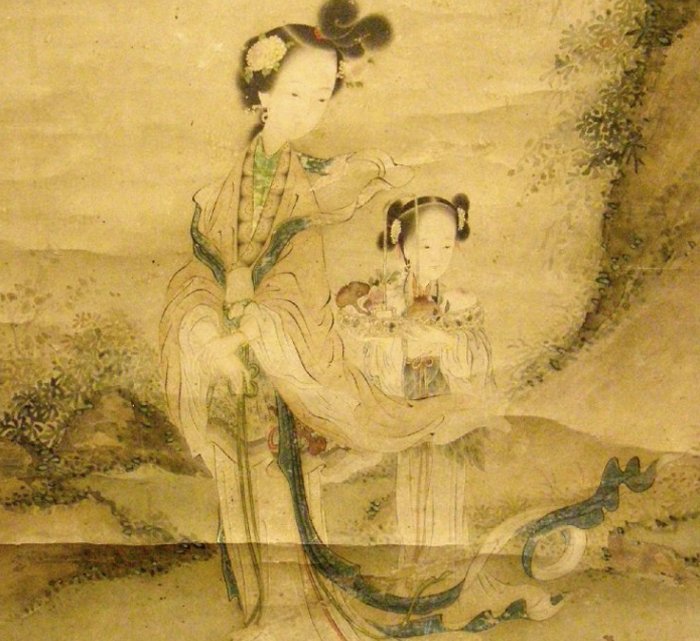 This powerful Chinese goddess was also known as the 'Queen of the West' or 'Queen Mother of the West. Source
This powerful Chinese goddess was also known as the 'Queen of the West' or 'Queen Mother of the West. Source
Kunlun was the sacred place associated with the goddess Xiwangmu (Xi Wangmu), as her place of residence, and as some tales say, there lived the divine siblings – Nuwa (Nüwa) and Fuxi lived. It was after the world was just created, and they were the only survivors of a great flood.
The Kunlun Mountains have been seen as the origin of the Chinese civilization, and a place where wonderful trees grew, producing precious stones instead of fruit, and cinnabar streams had magnificent properties. 'Those who drank from those streams escaped death.' 1
For the Hindu and other eastern religions, the sacred Mount Meru was of very similar importance.
Queen Mother Of The West And Great Instructor
This powerful goddess, also called the 'Queen of the West' or 'Queen Mother of the West lived in the Jade palace (or silver palace), where the herbs of immortality and long-lived fish grew. Blue magical birds were her messengers, and she traveled alone on a white crane.
See also:
Jade Emperor – Supreme Ruler Of Heaven In Chinese Mythology
Legendary Erlang Shen And His Third Seeing Eye That Could Distinguish Between Truth And Lie
Legendary Mount Penglai Where The Eight Immortals Reside
Xiwangmu possessed an elixir of immortality made from beautiful peaches that were cultivated during 6,000 years in an orchard on Kunlun Mountain. These wondrous fruits assured longevity or immortality and were served by Xiwangmu to the immortals who attended her great feast. The goddess' palace was believed to be a perfect paradise, where it was used as a gathering place for the divinities and a cosmic pillar where communications between deities and humans were possible.
In an ancient Chinese text Zhuangzi, Xiwangmu was the instructor of the ways of the Dao and immortality for the Yellow Emperor, who received instructions from Xiwangmu on how to civilize the world of humans, She also instructed other Chinese sage kings.
Goddess Of Destruction Or Vampire Sucking Yang Energy
Myths and legends usually vary much, and Xiwangmu's status and attributes have changed as well. In one legend, she was the Chinese goddess of disaster and destruction, who had tiger teeth and a leopard tail, or was a kind of vampire who sucked vitality yang out of men to strengthen her own yin. It is said she an excellent practitioner of Yin and Yang.
 Blue magical birds were Xiwangmu's messengers, and she traveled alone on a white crane. source
Blue magical birds were Xiwangmu's messengers, and she traveled alone on a white crane. source
Xiwangmu was occasionally considered the 'mysterious woman of the nine heavens,' each one in charge of the immortals of her sex.
Xiwangmu And The Heavenly Archer Yi (Hou Yi)
The Heavenly Archer Yi was a husband of the famous Chinese lunar goddess Chang'e ('the Lunar Toad'), which is the subject of many Chinese myths that date back to the Tang Dynasty (AD. 618 – 906).
Yi was the mythical hero who was capable of shooting down nine of the suns with his arrow. One day, for his impressive achievements, Yi was granted the herb of immortality by Xiwangmu. It was Yi who managed to build a jade palace for her, and as a reward, he received a pill made of longevity peaches. However, he was to eat it only after a year's fast, during which he could only feed on the scent of flowers.
Houyi decided to fast and hid a strong light-emitting pill on the roof of his home. Unfortunately, his curious wife Chang'e found the pill; she swallowed it and suddenly began to float in the air until it finally landed on the moon and turned into a three-toed toad.
Interestingly, on the historic Mawangdui funeral banner, the goddess Xiwangmu is accompanied by a toad tripod and a hare that prepares an elixir potion of life under the moon cassia tree that possesses seeds with magical powers.
During the spring festival of fertility, the Chinese offered Xiwangmu gifts on the sacrificial altar.
Written by – A. Sutherland - AncientPages.com Senior Staff Writer
Copyright © AncientPages.com All rights reserved. This material may not be published, broadcast, rewritten or redistributed in whole or part without the express written permission of AncientPages.com
Expand for referencesReferences:
Walters D., Chinese Mythology
James, Jean M. "An Iconographic Study of Xiwangmu during the Han Dynasty." Artibus Asiae 55, no. 1/2 (1995): 17-41.
More From Ancient Pages
-
 Sacred And Mysterious Lake Titicaca Still Holds Many Ancient Secrets
Ancient Mysteries | Jul 13, 2017
Sacred And Mysterious Lake Titicaca Still Holds Many Ancient Secrets
Ancient Mysteries | Jul 13, 2017 -
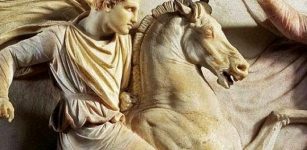 Why Was Alexander A Great Military Genius?
Ancient History Facts | Oct 23, 2018
Why Was Alexander A Great Military Genius?
Ancient History Facts | Oct 23, 2018 -
 Mask Of Shame: Worn In Ancient Times As Punishment For Gossiping
Ancient History Facts | Jan 5, 2017
Mask Of Shame: Worn In Ancient Times As Punishment For Gossiping
Ancient History Facts | Jan 5, 2017 -
 Ancient Egyptian Tombs With Stunning Trove Of Artifacts And Human Remains Unearthed In Saqqara
Archaeology | Jan 17, 2024
Ancient Egyptian Tombs With Stunning Trove Of Artifacts And Human Remains Unearthed In Saqqara
Archaeology | Jan 17, 2024 -
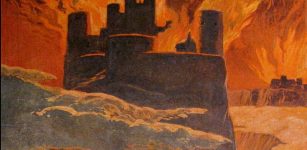 Ragnarok In Norse Mythology – The Doom Of The Gods And Apocalyptic Record Of The Coming Comet
Featured Stories | Jun 30, 2014
Ragnarok In Norse Mythology – The Doom Of The Gods And Apocalyptic Record Of The Coming Comet
Featured Stories | Jun 30, 2014 -
 Climate Change Likely Drove Early Human Species To Extinction – Scientists Say
Archaeology | Jul 31, 2023
Climate Change Likely Drove Early Human Species To Extinction – Scientists Say
Archaeology | Jul 31, 2023 -
 Mysterious Headless Skeleton May Be Sir George Yeardley – The Man Who Shaped Early America
Archaeology | Aug 11, 2018
Mysterious Headless Skeleton May Be Sir George Yeardley – The Man Who Shaped Early America
Archaeology | Aug 11, 2018 -
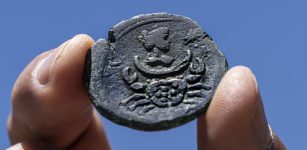 Rare 1,850-Year-Old Bronze Zodiac Coin Discovered During Underwater Survey Off Israel’s Coast
Archaeology | Jul 27, 2022
Rare 1,850-Year-Old Bronze Zodiac Coin Discovered During Underwater Survey Off Israel’s Coast
Archaeology | Jul 27, 2022 -
 Sirius Mystery – Scientific Evidence Of Alien Contact 5,000 Years Ago – Book Review
Civilizations | Apr 1, 2014
Sirius Mystery – Scientific Evidence Of Alien Contact 5,000 Years Ago – Book Review
Civilizations | Apr 1, 2014 -
 Ancient Oil Lamp Shop Discovered In Aizanoi, The Second Ephesus
Archaeology | Nov 22, 2021
Ancient Oil Lamp Shop Discovered In Aizanoi, The Second Ephesus
Archaeology | Nov 22, 2021 -
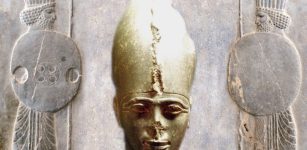 Pharaoh Psamtik III’s Deadly Encounter With Cambyses II Of Persia Ended The 26th Dynasty Of Egypt
Featured Stories | Apr 16, 2021
Pharaoh Psamtik III’s Deadly Encounter With Cambyses II Of Persia Ended The 26th Dynasty Of Egypt
Featured Stories | Apr 16, 2021 -
 Huge Pre-Viking Longhouse Discovered At Sem In Norway May Confirm A Scandinavian Myth – A King’s Home?
Archaeology | Nov 10, 2025
Huge Pre-Viking Longhouse Discovered At Sem In Norway May Confirm A Scandinavian Myth – A King’s Home?
Archaeology | Nov 10, 2025 -
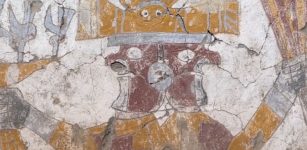 Ancient Murals Of Mysterious Two-Faced Beings And Supernatural Creatures At Pañamarca, Peru
Archaeology | Mar 21, 2023
Ancient Murals Of Mysterious Two-Faced Beings And Supernatural Creatures At Pañamarca, Peru
Archaeology | Mar 21, 2023 -
 Medieval Celtic Mystery Written In Konungs Skuggsja – The King’s Mirror
Featured Stories | Sep 13, 2018
Medieval Celtic Mystery Written In Konungs Skuggsja – The King’s Mirror
Featured Stories | Sep 13, 2018 -
 How Ancient Cultures Explained Comets And Meteors
Archaeoastronomy | Jun 5, 2019
How Ancient Cultures Explained Comets And Meteors
Archaeoastronomy | Jun 5, 2019 -
 7,000-Year-Old Kilns From Ceramics Workshop Unearthed In Northeast Bulgaria
Archaeology | Nov 20, 2020
7,000-Year-Old Kilns From Ceramics Workshop Unearthed In Northeast Bulgaria
Archaeology | Nov 20, 2020 -
 Hiding Tunnel Complex Dated To The Bar Kokhba Revolt Revealed Near The Sea of Galilee
Archaeology | Apr 23, 2024
Hiding Tunnel Complex Dated To The Bar Kokhba Revolt Revealed Near The Sea of Galilee
Archaeology | Apr 23, 2024 -
 Secret Dwelling Place Of Reptilian And Dragon-Like Creatures In Europe
Ancient Mysteries | Jul 18, 2018
Secret Dwelling Place Of Reptilian And Dragon-Like Creatures In Europe
Ancient Mysteries | Jul 18, 2018 -
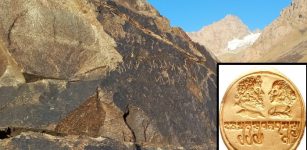 Enigmatic Ancient ‘Unknown Kushan Script’ Deciphered By Scientists
Archaeology | Jul 13, 2023
Enigmatic Ancient ‘Unknown Kushan Script’ Deciphered By Scientists
Archaeology | Jul 13, 2023 -
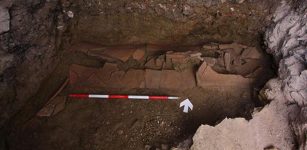 Roman-Byzantine Grave Unearthed In Turkey
Archaeology | Jan 28, 2016
Roman-Byzantine Grave Unearthed In Turkey
Archaeology | Jan 28, 2016
